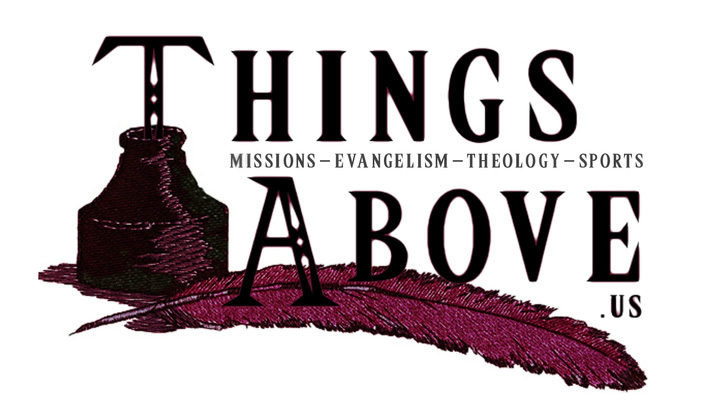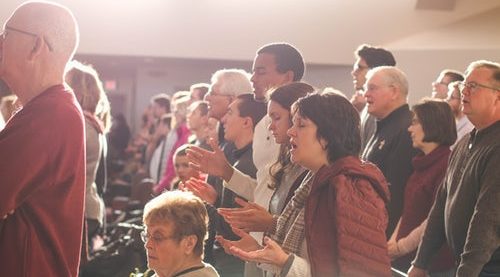 van Mastrich, Petrus. Theoretical-Practical Theology, Vol. 2: Faith in the Triune God. Edited by Joel R. Beeke. Translated by Todd M. Rester. Grand Rapids: Reformation Heritage, 2019. 704 pp. $50.00.
van Mastrich, Petrus. Theoretical-Practical Theology, Vol. 2: Faith in the Triune God. Edited by Joel R. Beeke. Translated by Todd M. Rester. Grand Rapids: Reformation Heritage, 2019. 704 pp. $50.00.
As the title to this book reveals, this is only the second volume in a planned seven-volume series from Reformation Heritage Books. Volume 2 is subtitled, “Faith in the Triune God,” which can create the false impression that it only deals with the nature of faith. Yes, there is plenty of material on faith, but the main emphasis is actually on God himself, or what theologians call “theology proper.” The author is very much concerned with the intricacies of faith, but even more so with the Triune God in whom we are called to place our faith. The editors explain how unique van Mastricht was in organizing his work this way (xxxi–xxxii). Each chapter in the book moves from exegesis of a relevant biblical text, to dogmatic (systematic theology), to elenctic (persuading), and finally to the practical.
Biographical Sketch of the Author
 Petrus van Mastricht (1630–1706) was a Dutch theologian who pastored churches in the Netherlands and taught at Duisburg and Utrecht. Theoretical-Practical Theology is van Mastricht’s magnum opus and until now, was only available in Latin or Dutch. No less than Jonathan Edwards has said that this work is “much better than Turretin or any other book in the world, excepting the Bible, in my opinion.” It has now been translated into English thanks to the painstaking work by translator Todd M. Rester and editor Joel R. Beeke (Puritan Reformed Theological Seminary).
Petrus van Mastricht (1630–1706) was a Dutch theologian who pastored churches in the Netherlands and taught at Duisburg and Utrecht. Theoretical-Practical Theology is van Mastricht’s magnum opus and until now, was only available in Latin or Dutch. No less than Jonathan Edwards has said that this work is “much better than Turretin or any other book in the world, excepting the Bible, in my opinion.” It has now been translated into English thanks to the painstaking work by translator Todd M. Rester and editor Joel R. Beeke (Puritan Reformed Theological Seminary).
The Nature of Saving Faith
Petrus van Mastricht and other Reformed theologians of his day taught that the three elements to saving faith are knowledge, assent, and consent of the will to accept God and Christ the Mediator (31). It is not enough to simply possess knowledge about God or even to assent to right understanding of that knowledge. Saving faith must also include what van Mastricht called “consent of the will,” or what others called “fiducia” or trust.
The Attributes of God
The author covers all the major points of the doctrine of God that one would expect. In his section on divine simplicity, van Mastricht reasons that “… if [God] were composite, he would require someone to compose him who was prior to the first being” (144). In other words, God cannot be made of “parts” since that would require another being before God who would have put the parts of God together.
In the practical part on God’s immutability (unchangeableness), van Mastricht argues that the doctrine “directs us to despise all creatures, however stable and brilliant they seem, when we consider that God alone is immutable, and thus that anything under the sun that is different from him is fragile, fleeting, and passing away” (161). Passages like this force the reader to stop and contemplate how great God is, and consequently, how petty and insignificant so much of our concerns can be. I seriously doubt the author was saying we should “despise” God’s creation in the sense that we hate what God created and called good (cf. Genesis 1:31). Instead, it is fair to say that our love for God should make our “love” for creation and our fellow creatures seem like “hate” by comparison (cf. Luke 14:26).
The perfections of God’s attributes force us to recognize Him as the greatest good and only worthy object of our love and worship. God loves himself most of all, as He should. As the author puts it, “In his love God is first and foremost occupied with himself, insofar as he is the highest good, on account of which he has made and does make all things (Prov. 16:4)” (351). There is eternal love between the Father and Son, and only then love pouring out to creation, “because he has rendered (all things) suitable for promoting his own glory.”
The Trinity
Anyone familiar with recent debates over what’s been called “Eternal Functional Subordinationism” (EFS) will appreciate what the author had to say about this issue. Theologians have had to explain the difference between the ontological Trinity (the being of God) and the economic Trinity (the operations or work of God). Petrus van Mastricht was already dealing with these concerns in his day. His discussion on the economic Trinity develops over several pages into a discussion of the covenant of redemption within the Godhead (505–506).
Adoption
As an amateur theologian and adoptive parent to 7 children, I have grown more and more fascinated and moved by the beauty of the doctrine of adoption. (You can find my series on adoption here.) Whenever I come across a book on theology, I immediately check to see what the author has to say about adoption. Petrus van Mastricht does not disappoint, even in this volume focused on theology proper. For van Mastricht, “the end or fruit of (saving) faith or reception, namely, union and communion with Christ, is contained in that one word ‘adoption’” (6, emphasis added). Yes, salvation is a work of God, but the goodness and trustworthiness of God the Father “invites us to seek adoption from the Father” (537, emphasis added). Insights like these make me all the more excited to see the future volumes in this series focused on soteriology.
Conclusion
Theoretical-Practical Theology Vol. 2 is a dense but profitable work of theology proper. The author’s serious commitment to the truth of Scripture comes through clearly, and yet it is surprisingly warm hearted and well…practical. Like the proverbial Eskimo with 100 words for snow, Petrus van Mastricht was a theologian with countless ways to describe faith and the Triune God we are called to place our faith in. Highly recommended.
A copy of this book was provided by the publisher in exchange for an honest review.





Religion is in decline because people today are putting their trust in the scientific method and not in ancient books…